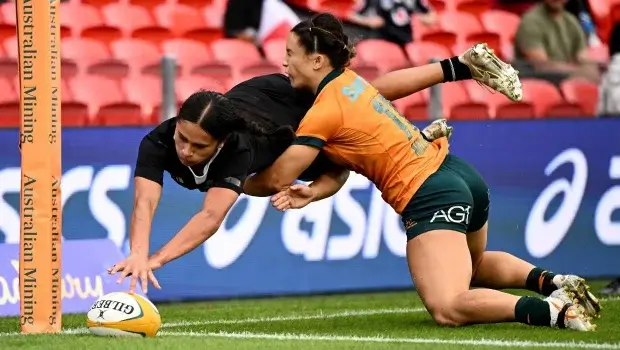Good morning fellow G&GRs, time to put last week behind us and start looking forward to this week while hoping “our” team can rise to the occasion and get the win so we can hold a moral superiority over others for another week. I really enjoy this part of the season as the games seem to mean a bit more. At the start of the season we can accept a loss knowing that over the course of the competition we can always even things up a bit. But now it’s the dirty end of the competition where a mistake could mean the difference between a home game or not. The cellar dwellers who have no chance of finals will be looking forward to stuffing up another team’s chances just for fun, and those in the middle will be hoping for a win to get them into the finals. Knockout rugby is a funny old thing – just ask Ireland – some teams can handle the pressure or even thrive in it, while others let it get into their heads and start making mistakes.
Referee corner
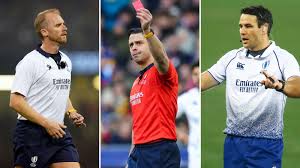
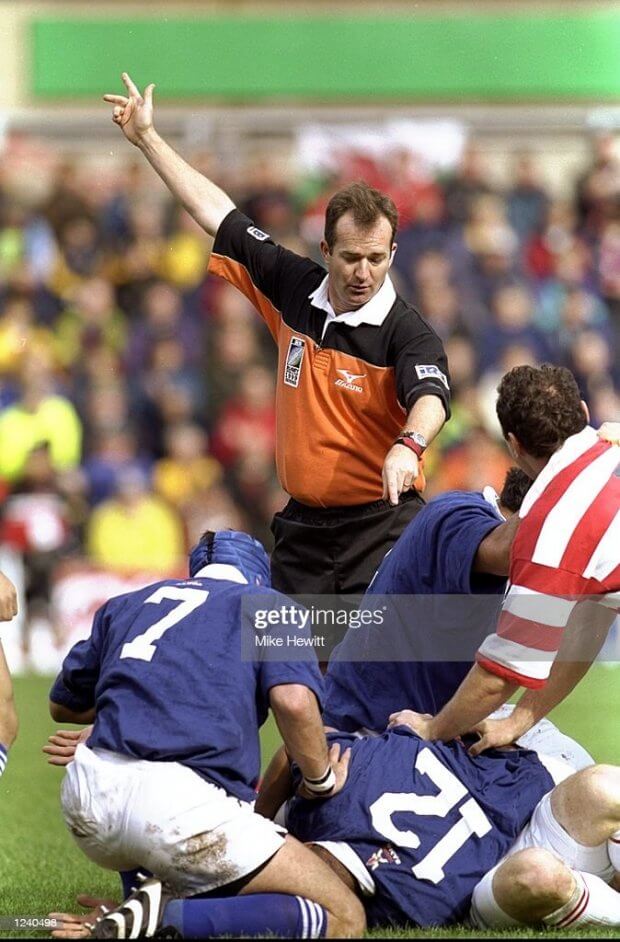
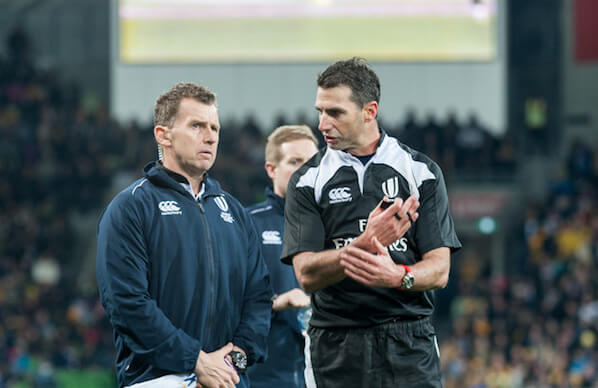
Well this was a weekend with some big calls in it. For me there were no issues with the cards that were given and all of them seemed to meet the requirements. I agree that there may’ve been some instances where it looked as though a card could’ve been given but wasn’t and it can be frustrating at times when this occurs. What makes it harder is that because there’s no discussion we don’t know why the incident wasn’t looked at. All part of the game we love and while annoying I don’t think it’s any more annoying than other calls we see not being made.
I had a chat about this with a spectator on Saturday. I had refereed a game and was providing some coaching to one of the other referees. This guy saw an incident against his team – naturally – and asked me about it. The things is, at every ruck, maul, tackle, in fact all the time, there are a multitude of laws that have to be followed. The maul has 29 separate laws (including law options), the ruck has 26, a scrum 76, lineout 53 etc. Now while not every one of these laws come into play at each of those times, that’s a lot of stuff a referee has to process. Despite being more intelligent, and better looking than most rugby players (certainly props and locks) we cannot go through these every time, we have a play or we’d just get lost and the game would disappear into an all out brawl – which it does sometimes anyway. The way we tend to process this is that we study the laws so we know them and then as we are adjudicating a game we apply them according to what we see at the time. Depending on where we are standing we see a slightly different picture and so we make a slightly different decision. Of course spectators and other players are seeing a different picture and have a different bias and so they often see something different again. Experience comes into it a lot and the longer you referee, the more accurate is your positioning and the picture you see and the more accurately you apply the laws. I also think referees who have played can have a different understanding of the game from those who haven’t. What we also have to take into account is the tactical application of the law, or what is material to the play at the time. So a 7 offside when the ball comes out the other side is probably not material and so we ignore it. If a prop runs close off a 9, then a centre offside isn’t going to affect the play, so don’t worry about it. This tactical application is very much experience based and the longer you referee, the more accurate your tactical application is. This explains the caterpillar thing a lot. The ruling is that as the ruck has already been won a 9 reaching in with his hand and pushing the ball back, or moving offside in front of the last feet to play the ball back isn’t materially affecting the outcome so let it go. I don’t agree totally with that, but there you go.
The two incidents that did seem to cause some distress was the score that was given for the Kiwi ladies and the one that was disallowed for the Aussie ladies. Personally, I thought the Australian one was a bad call. I thought the try was good but unfortunately the AR called a knock on and the referee didn’t go to the TMO for a review so the try was disallowed. Now while that call may have been wrong, the one for the Kiwi was actually spot on. There was a lot of talk about “No control of the ball”, “No downward pressure” and a few other things that are completely irrelevant and have no bearing on the decision. They are not part of the law and for me seem to come from the incredibly law ignorant commentators who have taken them from mungo ball, or somewhere else. In order to score a try the ball just has to be grounded. That means that the ball touches the ground in the in goal area (includes the try line but not the boundary lines) while it is touched by the attacking player. In a situation like this the main thing to look for is if there is a knock on. In the law book this is now called a knock forward. It is defined as: “when a player loses possession of the ball and it goes forward, or when a player hits the ball forward with the hand or arm, or when the ball hits the hand or arm and goes forward and the ball touches the ground or another player before the original player can catch it” So for the try to have been disallowed the player would have had to lose possession and it would have had to hit the ground before being regathered. Now rightly or wrongly in a try scoring incident such as this the issue is whether there was any separation between the players hand and the ball before it touched the ground. The referee, TMO and ARs all decided there wasn’t and so the try stands. The fact that it was only a fingertip and nothing else has absolutely no bearing on the outcome at all. In addition the fact that the Australian call may have been wrong also has no bearing on whether the Kiwi one was correct or not.
Super Rugby Pacific round 13 Player of the Year voting

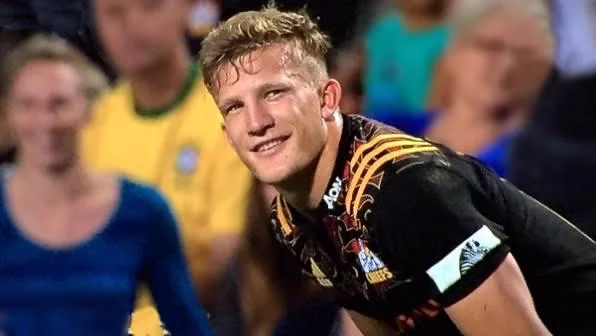
As reported here in rugby.com.au the latest Player of the Year voting sees Ardie still at the top but DMac chasing him hard with both Tom Hooper and Tizzano equal in 3rd place. The calls from the weekend are:
Fijian Drua v Blues
3 – Dalton Papali’i [BLU], Patrick Tuipulotu [BLU], Hoskins Sotutu [BLU], Joseva Tamani [DRU], Selestino Ravutaumada [DRU], Tevita Ikanivere [DRU]
2 – Beauden Barrett [BLU], Simone Kuruvoli [DRU
1– Taufa Funaki [BLU], Mesake Vocevoce [DRU]
Waratahs v Reds
6 – Charlie Gamble [WAR]
5 – Fraser McReight [RED]
3 – Lachie Anderson [RED]
2 – Angus Bell [WAR], Joey Walton [WAR], Harry McLaughlin-Phillips [RED]
1 – Henry O’Donnell [WAR], Langi Gleeson [WAR], Filipo Daugunu [RED], Josh Canham [RED]
Crusaders v Chiefs
6 – Damian McKenzie [CHI]
3 – Luke Jacobson [CHI], Tamaiti Williams [CRU], Fletcher Newell [CRU], Rivez Raihana [CRU]
2 – Cortez Ratima [CHI], Christian Lio-Willie [CRU]
1 – Simon Parker [CHI], Noah Hotham [CRU]
Force v Brumbies
5 – Len Ikitau [BRU]
3 – Tom Wright [BRU], Tom Robertson [FOR], Mac Grealy [FOR]
2 – Allan Alaalatoa [BRU], Tom Hooper [BRU], Darcy Swain [FOR], Nick Champion de Crespigny [FOR]
1 – Jeremy Williams [FOR], Nic Dolly [FOR]
The top 10 on the Super Rugby Pacific POTY Ladder
36 – Ardie Savea [MOA]
28 – Damian McKenzie [CHI]
27 – Carlo Tizzano [FOR] , Tom Hooper [BRU]
26 – Timoci Tavatavanawai [HIG]
24 – Langi Gleeson [WAR]
23 – Beauden Barrett [BLU] , Fraser McReight [RED]
21 – Cam Roigard [HUR]
20 – Allan Alaalatoa [BRU] , Joseph-Aukuso Suaalii [WAR]
19 – Ben Donaldson [FOR] , Du’Plessis Kirifi [HUR] , Will Jordan [CRU]
18 – Christian Lio-Willie [CRU] , Harry Potter [FOR] , Hoskins Sotutu [BLU] , Kini Naholo [HUR] , Luke Jacobson [CHI] , Peter Lakai [HUR] , Tate McDermott [RED]
I’m enjoying these calls and while we may or may not agree with them, they offer some food for thought on how players are going.
Fantasy rugby team

Over on that other site here a contributor pulled out an Australian team based on their Super Fantasy scores and a combined team using the same method. It’s provided some interesting selections and in some ways offers a good insight into how the different payers are performing in this competition.
15. Tom Wright (BRU) 448
14. Harry Potter (FOR) 509
13. Len Ikitau (BRU) 333
12. Joey Walton (WAR) 243
11. Corey Toole (BRU) 552
10. Ben Donaldson (FOR) 355
9. Tate McDermott (RED) 284
8. Langi Gleeson (WAR) 336
7. Carlo Tizzano (FOR) 490
6. Seru Uru (RED) 299
5. Darcy Swain (FOR)272
4. Nick Frost (BRU) 296
3. Allan Alaalatoa (BRU) 302
2. Billy Pollard (BRU) 412
1. Angus Bell (WAR) 239
16. James Slipper (BRU) 216
17. Nic Dolly (FOR) 403
18. Tom Robertson (FOR) 289
19. Jeremy Williams (FOR) 267
20. Fraser McReight (RED) 314
21. Teddy Wilson (WAR) 213
22. Tom Lynagh (RED) 282
23. Filipo Daugunu 304 (RED)/Andy Muirhead (BRU) 447
The team has 7 Brumbies, 7 Force players, 5 Reds, and 4 Waratahs which must raise some eyebrows. What is also very interesting is how many Australian players are fitting into a combined team picked using the same method as shown below. 11 out of the 23 indicates just how improved the Australian teams are this year.
15. Will Jordan (CRU) 491
14. Harry Potter (FOR) 509
13. Baylen Sullivan (HUR) 343
12. Quinn Tupea (CHI) 391
11. Corey Toole (BRU) 552
10. Damian Mckenzie (CHI) 532
9. Cam Roigard (HUR) 459
8. Christian Lio-Willie (CRU) 343
7. Carlo Tizzano (FOR) 490
6. Miracle Failagi (MOA) 438
5. Darcy Swain (FOR) 272
4. Nick Frost (BRU) 296
3. Allan Alaalatoa (BRU) 302
2. Ioane Moananu (CRU) 418
1. Angus Bell (WAR) 239
16. Ollie Norris (CHI) 232
17. Billy Pollard (BRU) 412
18. Tom Robertson (FOR) 289
19. Jeremy Williams (FOR) 267
20. Ardie Savea (MOA) 433
21. Tate McDermott (RED) 284
22. Beauden Barrett (BLU) 382
23. Timoci Tavatavanawai (HIG) 423/Sevu Reece (CRU) 456

